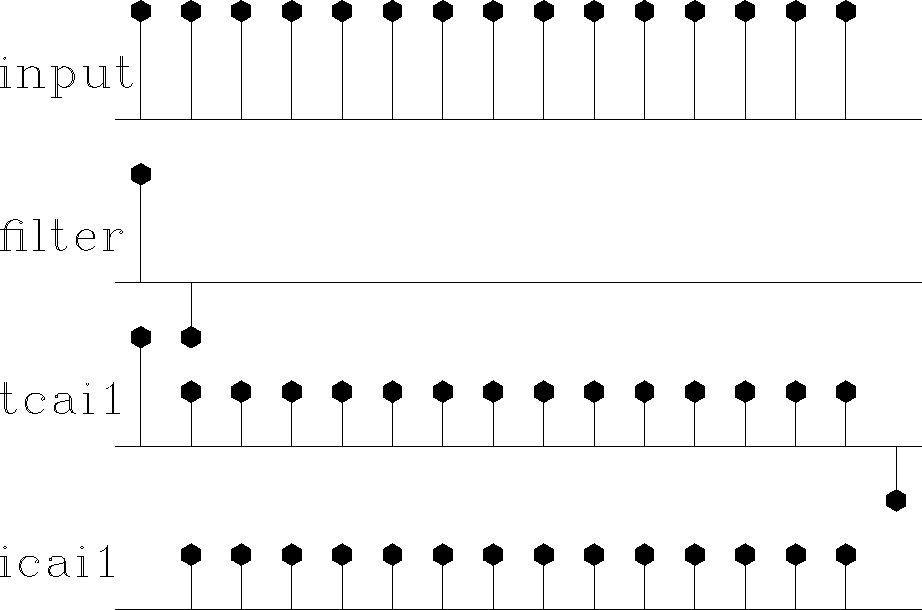|
conv90
Figure 1 Example of convolution end effects. From top to bottom: (1) input; (2) filter; (3) output of tcai1(), (4) output of icai1() with ( lag=1). |  |
The output of the transient convolution program has the length larger than the length of the input. In many applications, it is convenient to set the two lengths equal to each other. Reformulating the convolution operator allows us to relate the output space to the input space and deal appropriately with the convolution end effects. The Fortran 90 implementation is in module icai1 ( Internal Convolution, Adjoint is the Input 1-D).
module icai1 use adj_modreal, dimension (:), pointer, private :: b integer, private :: lg, nb, nx, y1, y2
contains
subroutine icai1_init (filter, nd, lag) real, dimension (:), pointer :: filter integer, intent (in) :: nd integer, optional, intent (in) :: lag
integer :: na
b => filter ; nb = size (b) ; nx = nd
if (present (lag)) then lg = lag else lg = 1 end if
y1 = nb + 1 - lg y2 = nx + 1 - lg end subroutine icai1_init
function icai1_op (adj, add, x, y) result (stat) integer :: stat logical, intent (in) :: adj, add real, dimension (:) :: x, y
integer :: i, x1, x2
call adjnull (adj, add, x, y)
do i = 1, nb x1 = nb + 1 - i x2 = nx + 1 - i if (adj) then x (x1 : x2) = x (x1 : x2) + b (i) * y (y1 : y2) else y (y1 : y2) = y (y1 : y2) + b (i) * x (x1 : x2) end if end do
stat = 0 end function icai1_op
end module icai1
The lag parameter lag, saved at the initialization step to the private variable lg, defines how the output of the operator aligns with the input. The end effects of transient and internal convolutions are compared in Figure 1.
|
conv90
Figure 1 Example of convolution end effects. From top to bottom: (1) input; (2) filter; (3) output of tcai1(), (4) output of icai1() with ( lag=1). |  |